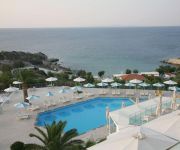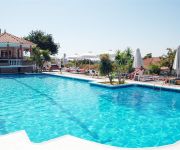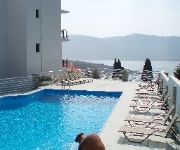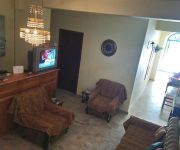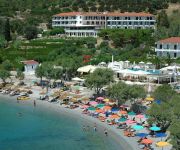Facts and Data
Webpages:
Official Unesco Page
Hellenic Ministry of Culture
Basis Data:
Unesco World heritage since: 1992
Size of heritage: 668 ha
- Buffer zone: 402 ha
Coordinates:
Longitude: 26,943°
Latitude: 37,691°
Summary
Many civilizations have inhabited this small Aegean island, near Asia Minor, since the 3rd millennium B.C. The remains of Pythagoreion, an ancient fortified port with Greek and Roman monuments and a spectacular tunnel-aqueduct, as well as the Heraion, temple of the Samian Hera, can still be seen.
Location on Map
Show bigger map on Openstreetmap
Pythagoreion and Heraion of Samos
The Pythagoreion and Heraion of Samos is a UNESCO World Heritage site located in the Prefecture of Samos, in the North Aegean region of Greece. This site holds immense historical and cultural significance, as it is associated with the ancient Greek mathematician Pythagoras and the sanctuary dedicated to the goddess Hera.
History
The Pythagoreion, named after Pythagoras, is an ancient fortified port town that flourished during the 6th century BC. Pythagoras, known for his contributions to mathematics and philosophy, was born in Samos and spent a significant part of his life in the Pythagoreion. The town was a center of intellectual and cultural activity, attracting scholars and philosophers from all over the ancient world.
The Heraion, on the other hand, is an ancient sanctuary dedicated to the goddess Hera, the wife of Zeus. It was one of the largest and most important sanctuaries in ancient Greece. The Heraion was constructed in the 8th century BC and underwent several expansions and renovations over the centuries. It was a place of worship and pilgrimage, attracting devotees from far and wide.
During the Hellenistic and Roman periods, both the Pythagoreion and the Heraion experienced further development and expansion. The Pythagoreion became an important commercial and cultural center, while the Heraion continued to be a significant religious site. However, with the decline of the Roman Empire, the site gradually fell into disuse and was eventually abandoned.
Current State
Today, the Pythagoreion and Heraion of Samos are well-preserved archaeological sites that offer a glimpse into the ancient Greek civilization. The Pythagoreion, with its impressive defensive walls, ancient houses, and public buildings, showcases the architectural and urban planning skills of the ancient Greeks.
The Heraion, located around 5 kilometers west of the Pythagoreion, is a vast archaeological site that includes the remains of several temples, altars, and other structures. The most notable feature of the Heraion is the Temple of Hera, which was one of the largest temples in ancient Greece. Although only a few columns remain standing, the grandeur and scale of the temple are still evident.
Visitors to the Pythagoreion and Heraion of Samos can explore the ruins and gain insights into the ancient Greek way of life. The site offers a unique opportunity to witness the architectural achievements and religious practices of the ancient Greeks. The serene surroundings and picturesque landscapes further enhance the visitor experience.
Efforts have been made to preserve and protect the Pythagoreion and Heraion of Samos. The site is managed by the Greek Ministry of Culture and is open to the public. Ongoing archaeological excavations and research contribute to a deeper understanding of the site's history and significance.
The Pythagoreion and Heraion of Samos stand as a testament to the rich cultural heritage of Greece and serve as a reminder of the intellectual and artistic achievements of the ancient Greeks. It is a must-visit destination for history enthusiasts and anyone interested in exploring the roots of Western civilization.
Hotels and places to stay
Doryssa Seaside Resort
Princessa Riviera Resort
Samos Sun Hotel
Scorpios Hotel Apartments
Kallirroi Studios
Mariona Hotel
Pegasus
Glicorisa Beach
PROTEAS BLU RESORT
Apollon
Videos from the area
Videos provided by Youtube are under the copyright of their owners.


